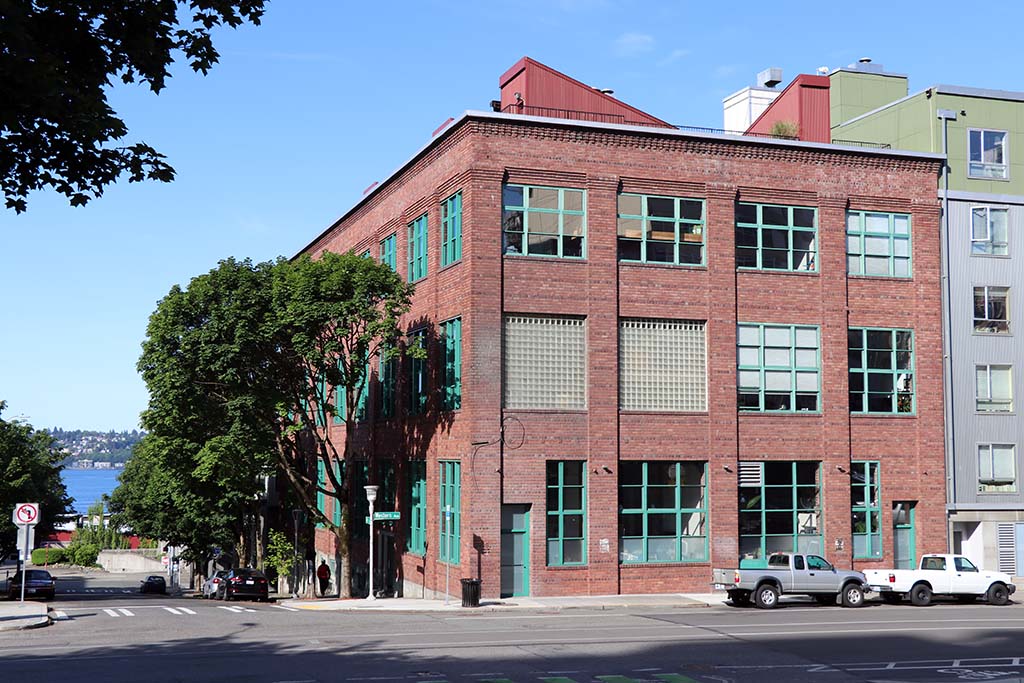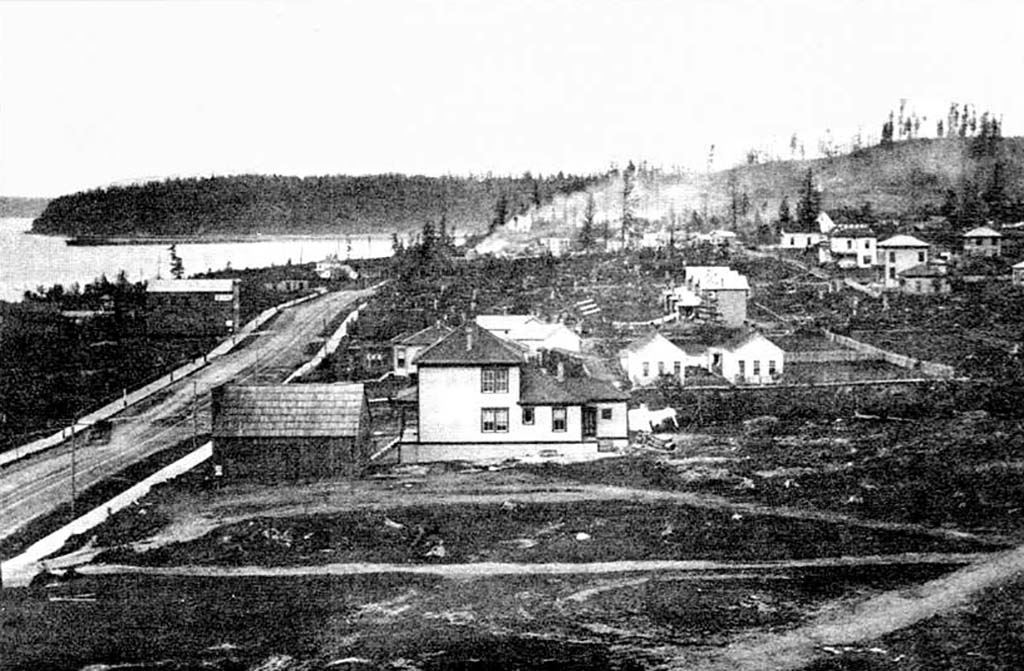-
BabáqWab
Bell Street and Western Avenue
Bell Street and Western Avenue
When the first non-Native settlers arrived here in 1851, they found a narrow ravine running down to the water at what is now Bell Street. Archaeologists speculate that it could have provided access to a prairie to the east, known as babaqWab. Various sources describe the open area as a “frequently used seasonal camp, a village with two winter houses [one of which a shaman used for curing ceremonies], or a historic Indian settlement with cabins of milled lumber.” Two trails accessed babaqWab, one from Pioneer Square, and one from Elliott Bay about three-quarters of a mile north of the ravine mouth. Because of the rapid growth of Douglas firs, which tend to move into open areas, the Native Duwamish people would have had to use fire to maintain the openness of the prairie and to enhance the habitat for food resources. Rich in salal, the prairie would also have had plentiful camas, bracken fern, and several varieties of berry.
But this way of life began to change with the arrival of settlers. On March 5, 1865, the Seattle Board of Trustees passed Ordinance No. 5, which banned Native people from living south of the Bell Street ravine and north of about Dearborn Street. The Duwamish had also suffered from disease (primarily smallpox), land loss due to treaties, and changed economic priorities, which led to a small community of Native people developing at the mouth of the ravine, one of the few places they were allowed to live in what had been for thousands of years their home territory. A handful of cabins and shacks that housed resident and seasonal workers remained at this location until 1905 and the construction of Great Northern Tunnel under Seattle. By 1910, the ravine no longer existed.
Walk east up Bell Street to 1st Avenue.


